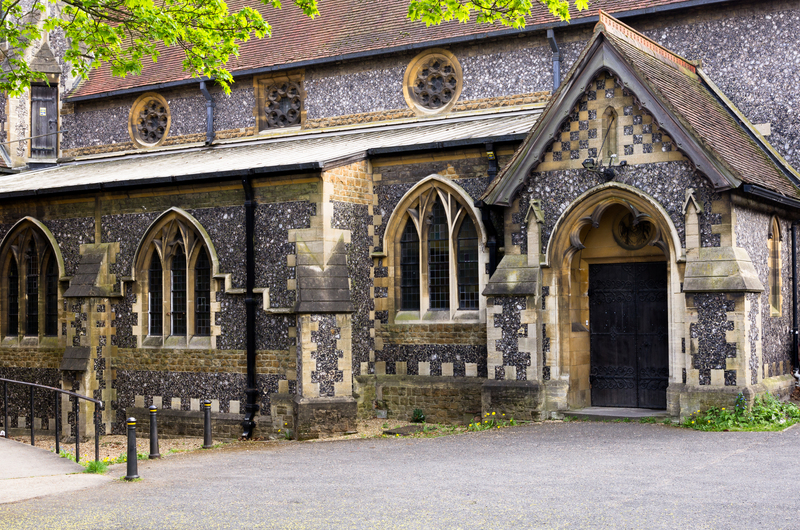Avoid DIY Disasters: Expert Guidance on Piano Moving
Posted on 26/05/2025
Avoid DIY Disasters: Expert Guidance on Piano Moving
Moving a piano is one of the most challenging tasks homeowners face during a move. This large, heavy, and delicate instrument requires careful planning and specialized handling to avoid damage to both the piano and your property. In this comprehensive article, we'll explore why avoiding DIY piano moving is crucial, what professionals do differently, and provide expert tips and guidance to ensure a safe, successful piano relocation.

Why Moving a Piano Is Not a Typical DIY Project
At first glance, you might think moving a piano is just a matter of extra muscle and carefully maneuvering through doorways. However, pianos are complicated, fragile, and extremely heavy. Ranging from 300 pounds for small uprights to over 1,200 pounds for grand pianos, these marvels of musical engineering can suffer catastrophic and expensive damage if not handled properly.
- Weight Distribution: Pianos do not have a uniform weight distribution. Much of the weight is concentrated in specific areas, especially the back and lower frame.
- Internal Components: With over 10,000 moving parts inside, a mishandled piano can lose its precise tuning or even suffer irreversible harm to its action, strings, or soundboard.
- Fragile Exterior: The polished wood and sensitive finishes are vulnerable to scratches, dents, and chips during moves.
Attempting a DIY piano move without the right equipment and expertise places your instrument, your home, and your personal safety at significant risk.
The Most Common Piano Moving Disasters
Before examining professional solutions, it's helpful to understand the common disasters that can result from a do-it-yourself approach to piano moving:
- Back Injuries and Accidents: The most frequent issue is personal injury. Pianos are unwieldy and can easily cause hernias, strains, or worse if dropped.
- Wall and Flooring Damage: Scratches on hardwood, cracked tiles, gouged drywall, and damage to stair railings or door frames are prevalent when moving without proper techniques.
- Piano Damage: Components inside the piano can be knocked loose, strings can snap, and the finish can be scarred permanently.
- Instrument Tuning Problems: Even if a piano appears unharmed, an improper move can throw it drastically out of tune or affect its resonance.
These risks underscore the importance of expert piano moving guidance and the value of specialized techniques.
What Professional Piano Movers Do Differently
Specialized Equipment
- Piano Dollies and Skids: Pros use heavy-duty dollies and skids designed for pianos, ensuring proper weight distribution and minimizing shock to the frame.
- Padded Covers and Straps: Thick padding prevents scratches, while sturdy straps keep the piano secure on dollies and in trucks.
- Ramps and Lifts: Navigating stairs or raised entries is easier and safer with portable ramps and hydraulic lifts.
Trained Technique and Teamwork
- Assessing the Environment: Staff survey doorways, hallways, stairs, and potential obstacles before moving a single item.
- Disassembly and Reassembly: Some grands require leg removal or pedal dismantling--tasks best left to those familiar with piano construction.
- Synchronized Lifting: Professional teams lift with precise coordination, minimizing risk of slips or dropped instruments.
Insurance and Peace of Mind
Most professional piano movers carry specialized insurance policies to protect both your instrument and property. Should an accident occur, you're not left with an enormous bill for repairs or replacement.
The Step-by-Step Process: How Experts Move Pianos Safely
- Pre-Move Inspection
Movers examine the instrument, the moving environment, and note any existing damage. - Environmental Preparation
Walkways are cleared, doors are removed if needed, and protective floor coverings are laid down. - Piano Padding
The body and legs are wrapped in thick quilted blankets and securely taped. - Disassembly (when required)
Grands have their legs, pedals, and music stands removed for transport, and parts are labeled for reassembly. - Strategic Lifting and Positioning
With straps and dollies, the piano is gently moved to the truck, using ramps where necessary. - Careful Loading & Securing
In the truck, the piano is anchored to prevent shifting. - Unloading and Reassembly
At the new location, professionals reverse the process, carefully reassembling and placing the piano.
This meticulous process is why hiring certified piano movers is the best choice for protecting both your valuable instrument and your property.
How to Choose the Right Piano Moving Company
Not all moving professionals are created equal. When selecting an expert for your piano, consider the following:
- Experience: Look for companies specializing in piano moving with years of successful relocations.
- Equipment: Ensure they use proper skids, dollies, padding, and have climate-controlled vehicles if moving long-distance.
- Insurance: Confirm that the mover has comprehensive insurance that covers the full value of your piano.
- References and Reviews: Check online reviews and ask for references from previous clients.
- Transparent Estimates: Reputable companies provide itemized, written estimates with no hidden charges.
Questions to Ask Your Piano Mover
- How many pianos have you moved?
- Do you offer climate-controlled transportation?
- What steps do you take to prevent property damage?
- Is my piano insured during the move?
Preparing Your Piano and Home for Professional Movers
Though experts handle the heavy lifting, some preparation on your end streamlines the process:
- Clear Pathways: Remove rugs, decor, or obstacles from all move routes.
- Control Climate: Extreme humidity or cold can harm pianos; keep indoor temperatures stable before and after moving.
- Secure Pets and Children: Keep loved ones out of moving zones for everyone's safety.
- Communicate Details: Inform the movers about tight corners, narrow stairs, or any unusual challenges.
Special Note on Long-Distance Piano Moving
If your piano is traveling far or requires storage, choose a mover with climate-controlled storage and suitable handling for potential temperature and humidity changes.
Piano Aftercare: What to Do After the Move
Once your piano reaches its new home, there are important aftercare steps to preserve its sound and beauty:
- Placement: Avoid placing your piano against outside walls, near radiators, air vents, or windows. These locations can cause moisture imbalances or temperature fluctuations.
- Tuning: Wait about two to three weeks before retuning your piano. Moving can cause subtle shifts as the instrument acclimates to its new environment.
- Inspection: Examine both exterior and keys for any signs of damage. Report issues to your mover immediately.
- Cleaning: Wipe down the piano with a soft, dry cloth to remove any moving dust.

Piano Moving FAQs
Can I move my piano with regular household movers?
No. Standard movers lack the tailored equipment, expertise, and liability coverage needed for safe piano moving. Always hire specialists for your valuable instrument.
How much does professional piano moving cost?
Costs vary based on piano size, distance, obstacles, and location. Expect professional piano moving services to range from $150 to over $1,000, with grand piano moves falling on the higher end. The cost is minimal compared to the potential repairs or replacement fees caused by mishandling.
Can my piano be moved upstairs or downstairs?
Yes, expert piano movers have the equipment and experience to safely navigate staircases. They will often visit your home in advance to assess what is required for a safe move.
Should I dismantle my piano before the movers arrive?
Do not attempt to dismantle your piano. Leave disassembly and reassembly to the professionals. Incorrect handling can harm the internal mechanisms.
Conclusion: Protect Your Piano and Peace of Mind with Professional Expertise
Attempting a DIY piano move may seem like a way to save money, but the potential for disaster far outweighs any perceived savings. Only professional piano moving specialists have the resources, knowledge, and insurance to ensure your beloved instrument arrives at its destination intact and sounding beautiful.
Don't risk becoming another DIY disaster story. When it's time to relocate your piano, call on experienced piano movers for expert guidance and peace of mind. Your instrument--and your back--will thank you for it.



